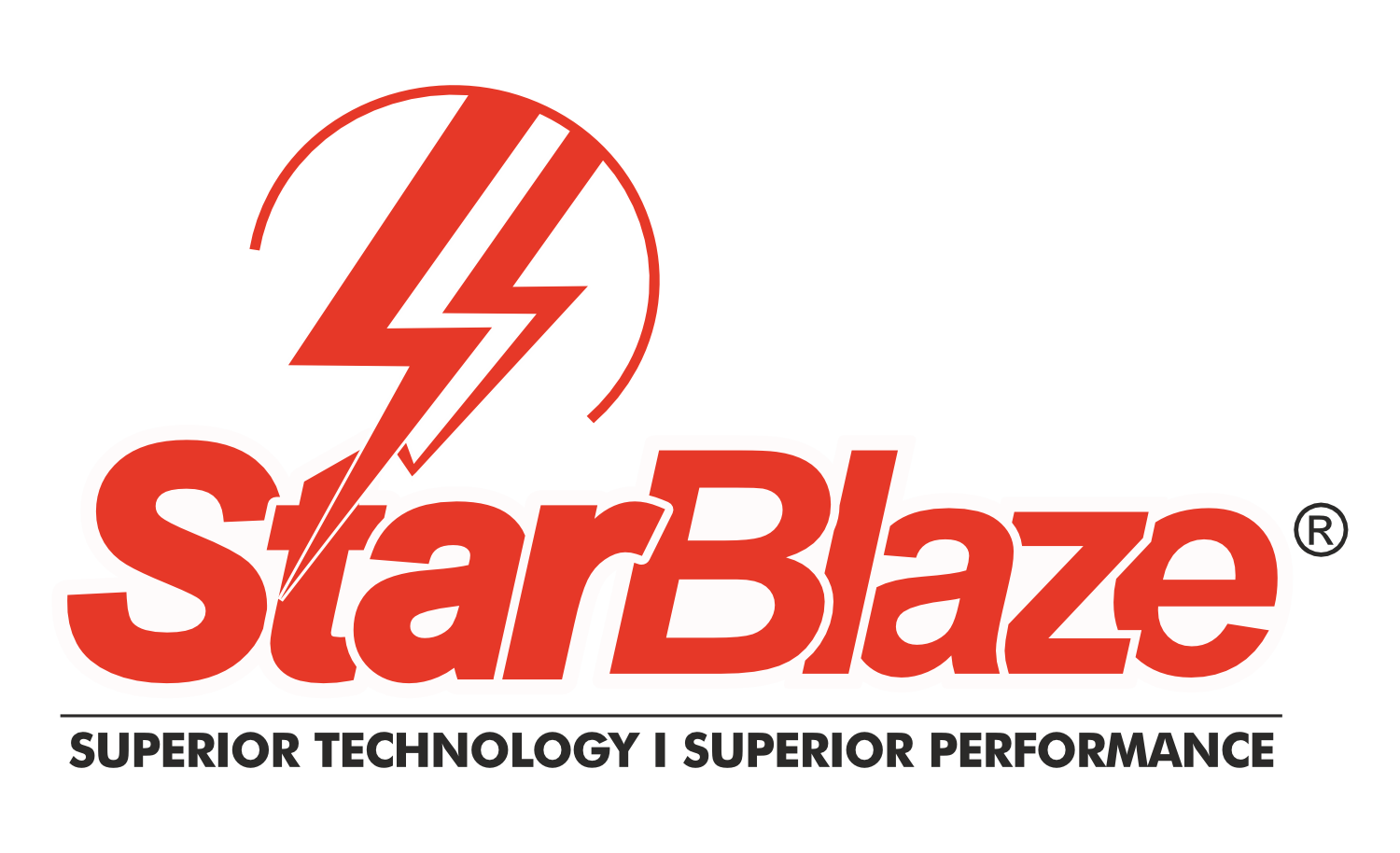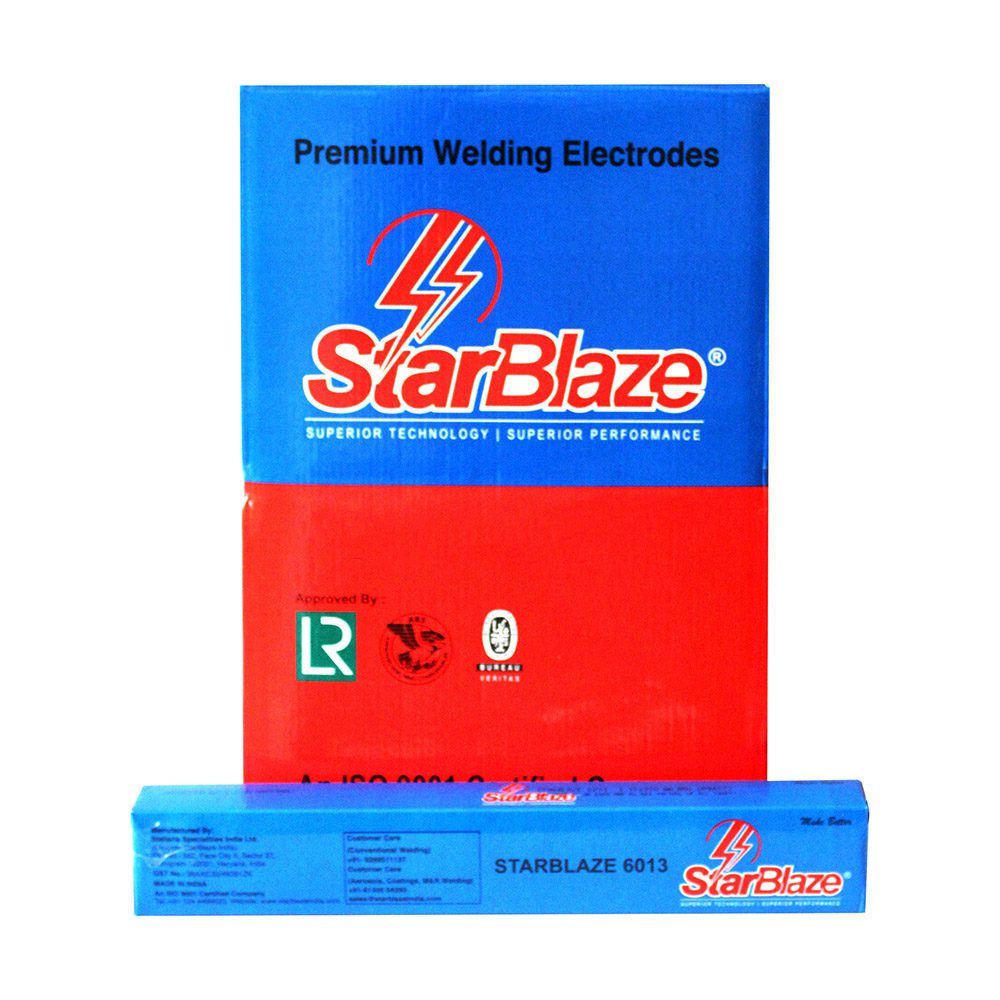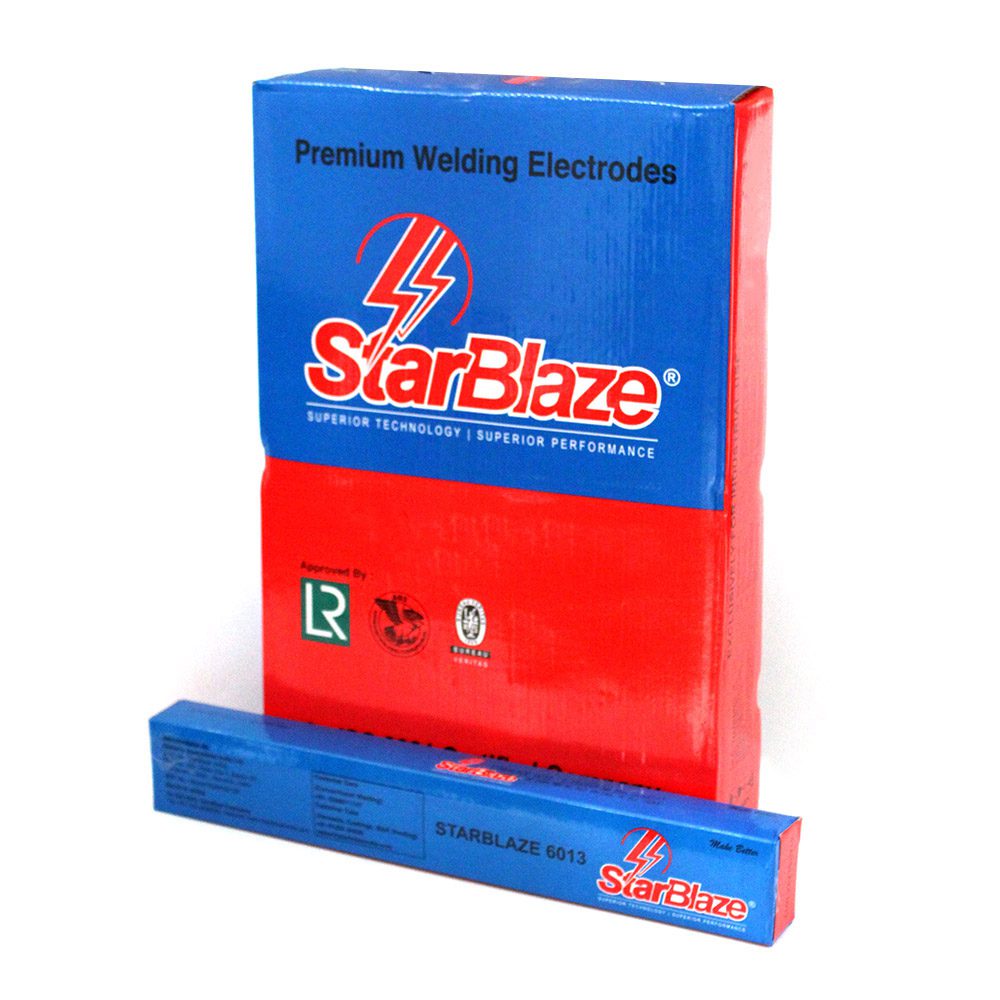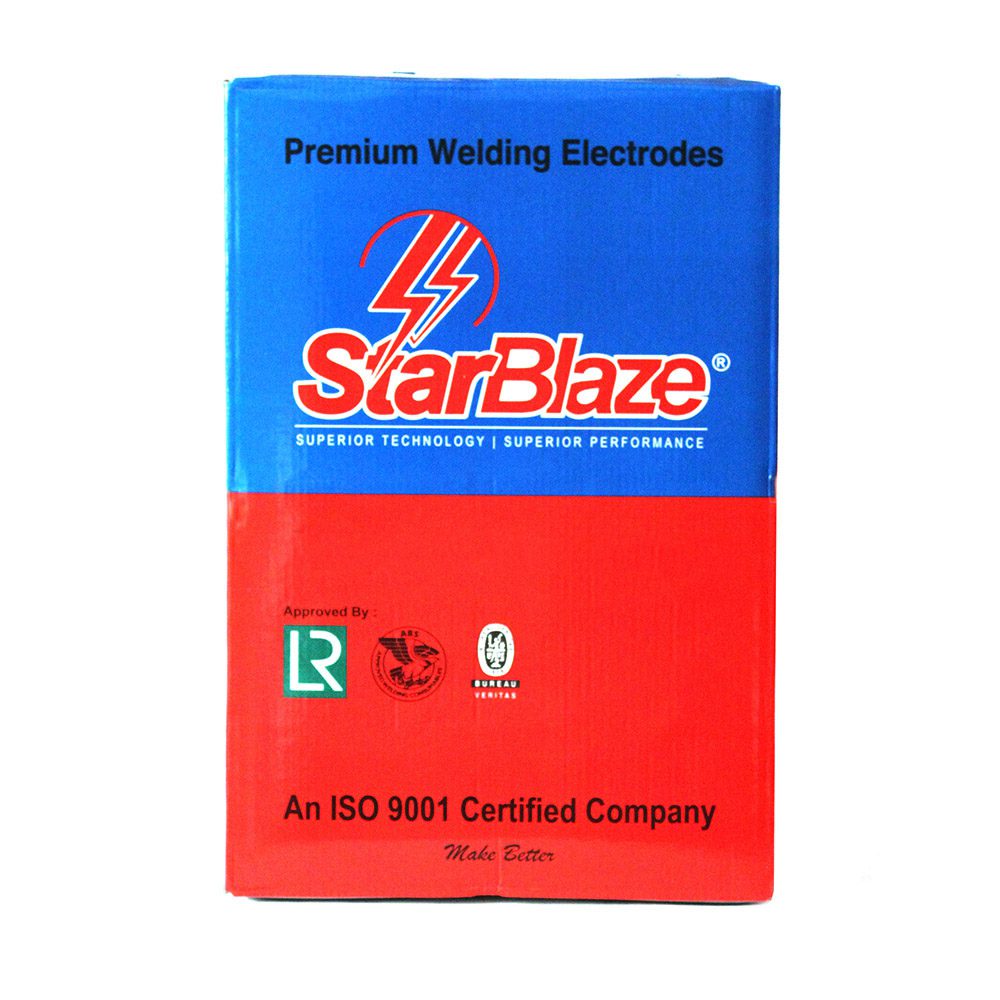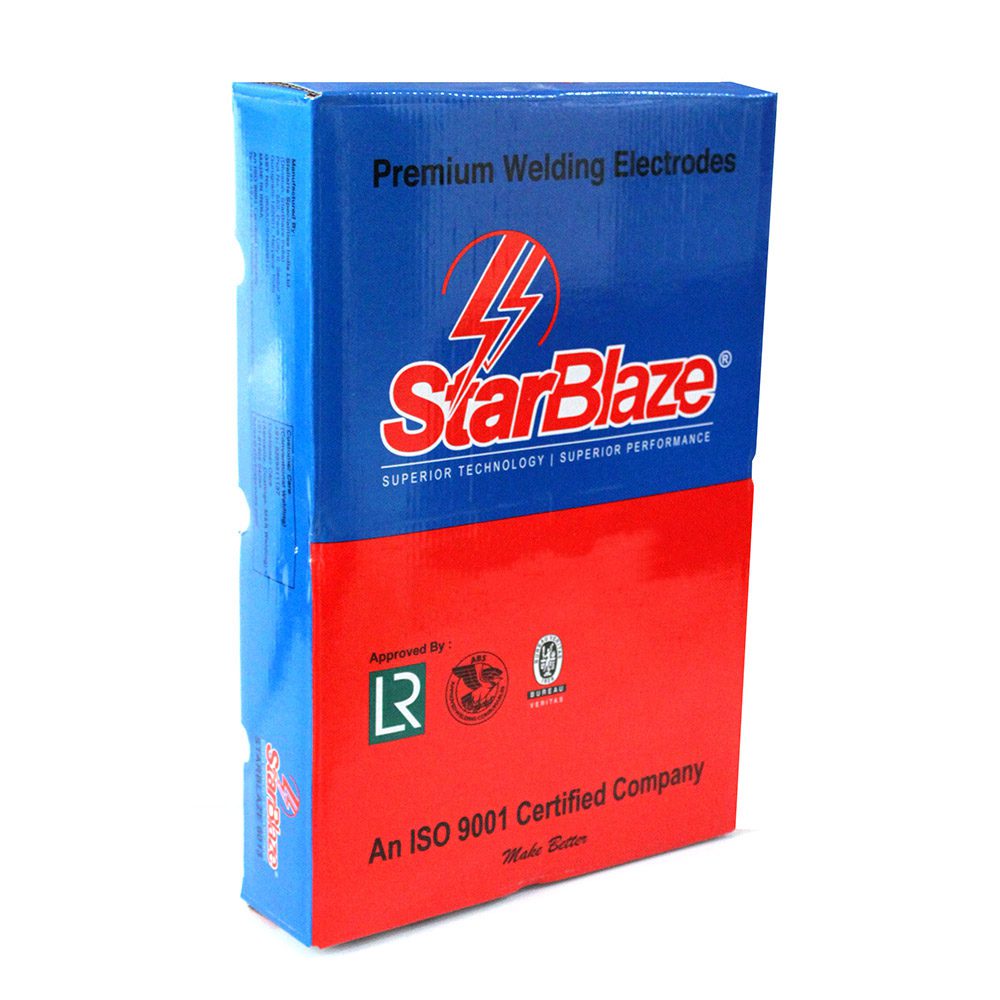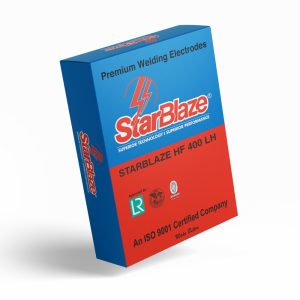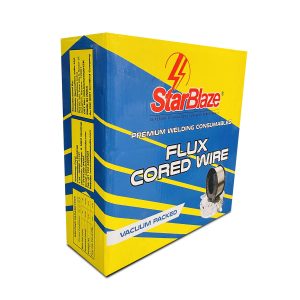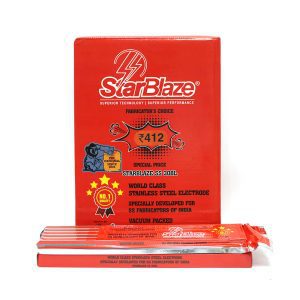StarBlaze HF 550
DIN EN 8555: E6-UM-60P
57–61 HRc | Impact & Abrasion Shield | Crusher-Grade Toughness
An extreme-duty hardfacing electrode engineered for abrasion-prone, high-impact surfaces. With a Cr-V-Mo enriched alloy matrix, STARBLAZE HF 550 forms an ultra-hard weld deposit resistant to cutting wear, grain erosion, and hammering. Ideal for crusher jaws, mixer blades, dredger components, and everything in-between. Designed for rebuilds that demand hardness—and hold it.
Available Packs:
Dimensions: 3.15 mm x 450 mm, 4.00 mm x 450 mm, 5.00 mm x 450 mm
- Pack Sizes: 2.5 Kg Pouch, 5 Kg Box
- Master Box: 20 Kg, Customisable packaging available on request
- Weld metal hardness: 57–61 HRc
- Superior resistance to gouging, crushing, and slurry wear
- Cr-V-Mo alloyed deposit for extended service life
- Machinable only by grinding
- Low spatter and smooth, stable arc characteristics
- Suitable for heavy-duty rebuilds and wear-prone surface overlays
- Mining & Mineral Processing
- Cement & Aggregate Plants
- Scrap Shredders & Recycling Equipment
- Construction & Earthmoving Equipment
- Dredging Teeth & Pump Components
- Quarry & Crusher Maintenance
- Manual Metal Arc Welding (MMA / SMAW)
- Compatible with AC and DC+ polarity
- Welding positions: PA (flat), PB (horizontal fillet), PC (horizontal butt)
- Best used with a short arc and steady hand control
- Guide with a tight arc to reduce dilution and maximise hardness
- On crack-sensitive steels, use 18/8Mn buffer layer
- Preheat high-carbon or alloy steels to 200–400 °C as needed
- Slow cooling in still air post-weld improves microstructure
- Ideal for build-up layers on worn machinery and impact tools
Product Details
Typical Weld Metal Chemical Composition (%)
| C | Si | Mn | Cr | V | Mo | Fe |
| 0.60 | 0.40 | 0.60 | 7.00 | 0.60 | 0.70 | Rem |
Typical Mechanical Properties (All Weld Metal)
| Hardness |
| 57-61 HRc |
Recommended Welding Parameters
| Diameter (mm) | Amperage Range (A) |
| 3.15 | 90-120 |
| 4.00 | 140-180 |
| 5.00 | 180-240 |
Raise a Quote
Related Products
-
DIN 8555: E1-UM-350P 30–35 HRc Hardness | All-Position Build-Up | Machinable & Durable An all-position, basic-coated hardfacing electrode engineered for depositing wear-resistant chromium-manganese alloy weld metal. Designed for parts subject to sliding friction, mild impact, and dynamic surface wear. Delivers a clean, low-spatter arc and forms a tough yet machinable weld deposit, making it ideal for rebuilding worn components in construction, mining, and material handling. Available Packs
- Dimensions: 3.15 mm x 450 mm, 4.00 mm x 450 mm, 5.00 mm x 450 mm
- Pack Sizes: 2.5 Kg Pouch, 5 Kg Box
- Master Box: 20 Kg, Customisable packaging available on request
-
E71T-1 is a high-performance, all-position gas-shielded flux-cored welding wire engineered for both single and multi-pass welding on mild and low alloy steels. It offers exceptional arc stability, low spatter, easy slag removal, and excellent weld bead appearance. Designed for high productivity applications in structural steel fabrication, the wire is vacuum-packed for rust-free storage and superior shelf life.
Available Sizes & Packaging
Shelf Life: 12+ months (in original vacuum pack, unopened)Wire Diameter Packaging Type Pack Size 1.20 mm Vacuum-packed spools 15 kg/spool (standard) 1.60 mm Vacuum-packed spools 15 kg/spool Other sizes On request (MOQ applies) Custom spool sizes available
Storage Note: Keep in dry and cool storage to prevent premature rusting. -
AWS A5.4: E308L-16 | DIN 8556: E19 9 LR 23 | DIN EN 1600: E19 9 L R 32
Low Carbon. Crack-Resistant. Versatile.
A rutile-basic coated stainless steel electrode, E308L-16 is designed for welding austenitic 18/8 Cr-Ni stainless steels. With a low carbon core wire (308LER) and optimized ferrite (~8%), it offers maximum crack resistance, smooth arc characteristics, and superior corrosion resistance. The electrode produces soft fusion with minimal spatter, excellent slag detachability, and aesthetically clean weld beads. Suitable for use at service temperatures from -120°C to +350°C.
